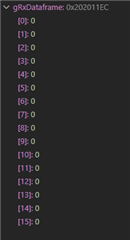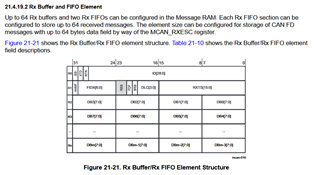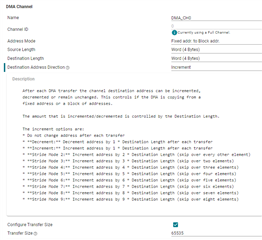Other Parts Discussed in Thread: SYSCONFIG
Tool/software:
Hi there,
I would like to implement CAN RX with DMA.
Is there any corresponding documentation, tutorials, sysconfig, code examples that I can refer to and learn from?
Unfortunately I have not found much suitable.
Thanks a lot in advance.
Matze








